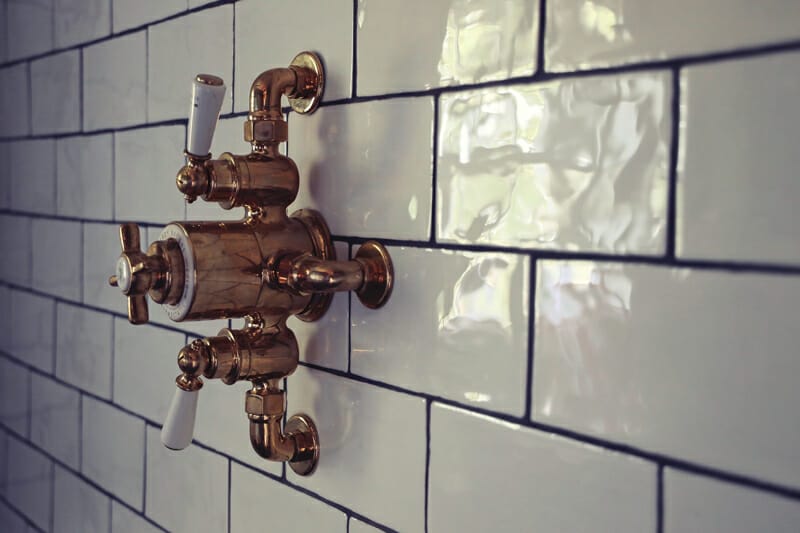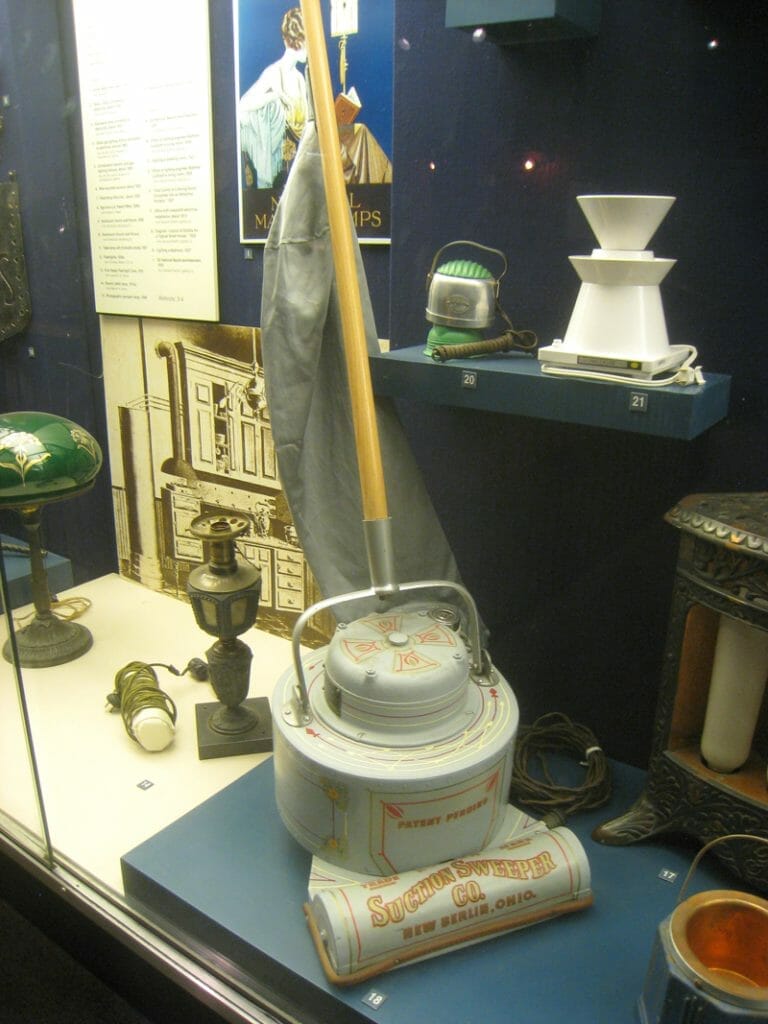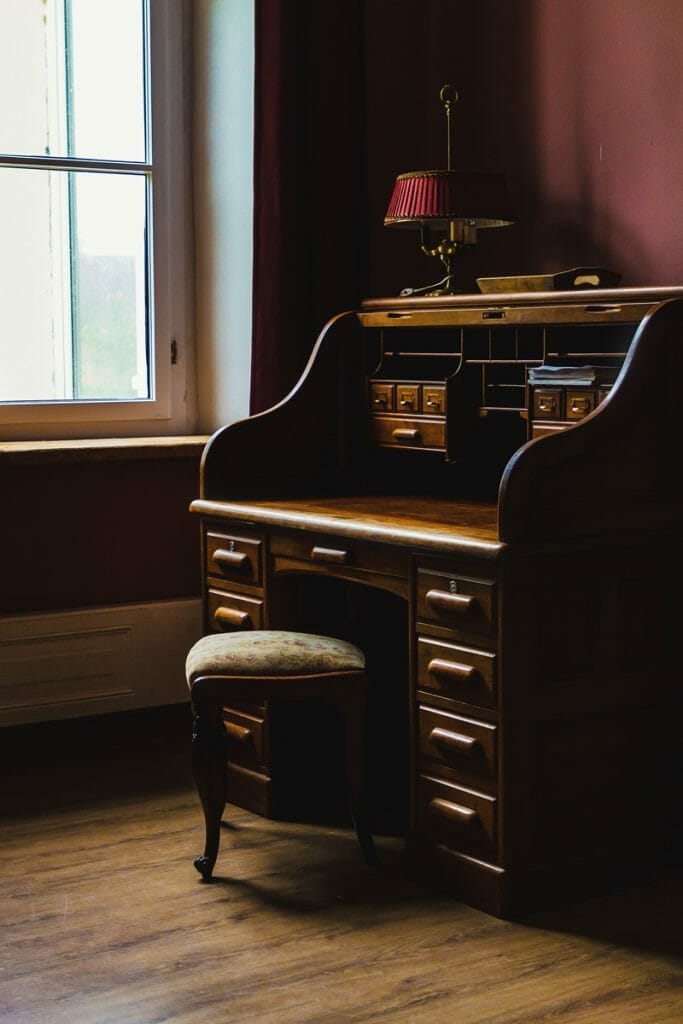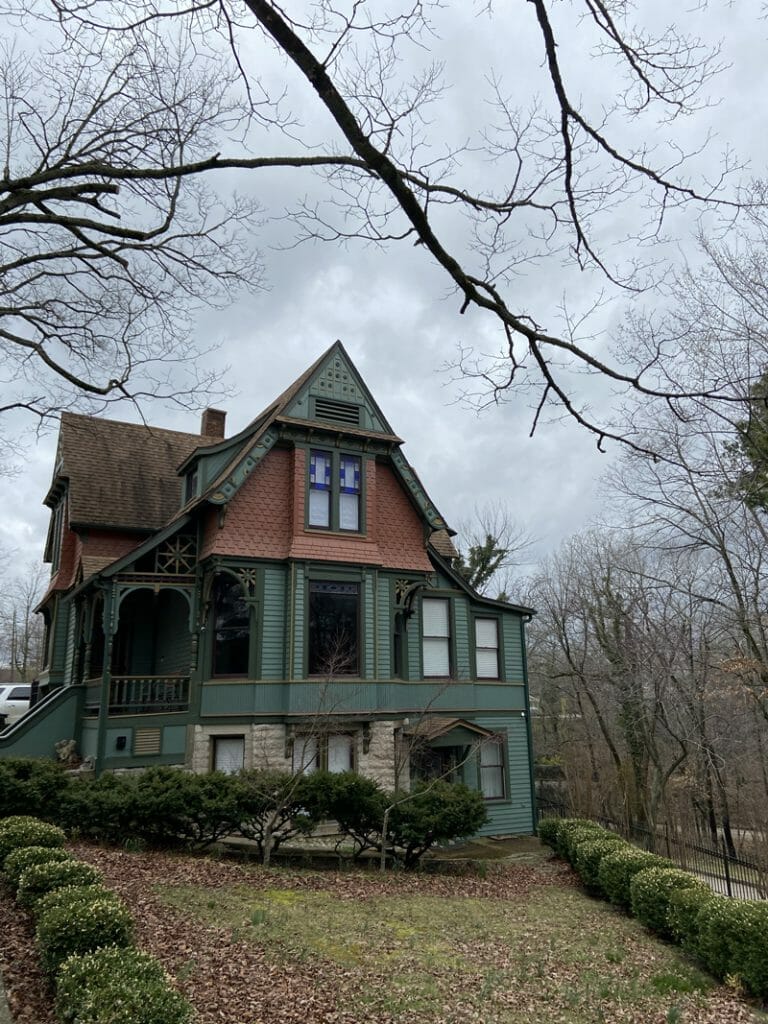My love for all things Victorian began at the age of five. I hung my head out of a Eureka Springs trolley car yelling “wow” with intense, aggressive love at the passing gingerbread houses. It’s been true love ever since. I don’t like the “idea” of a Victorian home. Please don’t show me a gutted Victorian with a stainless-steel modern kitchen and open floor plan— unless you’re simultaneously handing me a sedative. I love the overdone wallpaper, stained glass, dark wood trim, and over-the-top gingerbread like the fanciest overdose of wedding cake you’ve ever eaten. This could be why I take every opportunity to extoll my love for Eureka Springs in article form (like here, here, and here).
And while these houses are beautiful, the Victorians also left behind useful and important inventions that changed homes forever. We still benefit from these innovative advances. We may not all love Victorian houses or style, but we most definitely like our indoor bathrooms and should give Victorians the credit they deserve.

Open Floor Plans, No Thanks
Victorians clearly remembered the days of one-room-cabin living and said, “Absolutely not. No thanks.” Their floor plans insisted on a room for everything and a designated place for everything. The grand houses had a sitting room, music room, dining room, solarium, library; there was no concept of communal living in those houses. Even the smaller and middle-class homes had separation between living, dining and cooking.
As an introvert who very much likes escaping to the dining room to read and write (where zero toys are present), I very much condone the idea of separate rooms. Delineated spaces also freed the Victorians to decorate each room uniquely. Most rooms had their own decor and color; a blue living room, a pink bedroom, or perhaps a yellow kitchen. Separate rooms allowed for more hanging art, curtains, and a myriad of wallpaper designs.
And while we’ve lived through two solid decades of open floor plan home design, the tide is turning a bit. Personally, I don’t want to sit on the couch with a bowl of popcorn while simultaneously having a direct line of sight into my dirty kitchen. Victorian separation-of-space sensibilities are returning, or maybe they never left.

Goodbye Outhouse, Hello Modern Conveniences
Victorians ushered in the era of modern bathrooms, and thankfully society was able to say goodbye to outhouses and chamber pots. It bears mentioning that their bathrooms were not like the modern ones we have now. Most large Victorian homes only had one small “water closet” which housed a toilet and a separate room for a wash basin and tub. In large tenement housing communities, there were often 100 people using one lone toilet. But it was still the beginning of indoor conveniences.
While Thomas Crapper usually gets credit for inventing the first flushable toilet circa 1860, the idea was in existence for much longer. In the 16th century Sir John Harrington invented a primitive water closet. The idea didn’t become popular until Crapper (and yes, that’s where the name comes from) patented his toilet design.

Let There Be Light
Victorians also get credit for perhaps the most important home game-changer; the invention of the light bulb. In 1880 Thomas Edison patented his filament light bulb and homes changed forever. Gone were the days of stumbling around in the dark with a candle, or hoping your home didn’t catch fire from gas flame light fixtures. And while only half of the homes in the US had electricity by 1925, the electrical revolution started with the Victorians. All the things we enjoy today wouldn’t be possible if not for our electric homes. Without it, we wouldn’t be heating, cooling, cooking or reading from the very screen in front of us.

The OG Appliances
When we consider iconic modern appliances, we think of Kitchen aid mixers, Whirlpool dishwashers, and Bissel vacuum cleaners. But none of these innovations would exist without Victorian innovation and know-how. Victorians invented dozens of appliances, such as electric kettles, ice cream makers, innovative cookstoves, home sewing machines, ice boxes to store food, and the list goes on. The original vacuum was invented by Daniel Hess and patented in 1860. It was not one of the miraculous Roombas we have today, but a hand operated rotating brush with bellows. Vacuums would go on to become more functional, and eventually powered by electricity. So, the next time you’re vacuuming your living room rug instead of taking it outside and beating it with a broom, spend a thankful second for the OG appliance inventions that made our lives easier today.

The Home Office
Victorians loved their furnishings. They loved dark stains over the top carvings, and from what I can tell their philosophy was “the more wicker, the better.” One wicker-obsessed example can be found in Little Rock history. The Cornish house in the Quapaw Quarter was estimated to have had $15,000 worth of wicker furniture when it was built in 1917. Even though that date missed the official “Victorian period” by a few years, Mrs. Hilda Cornish’s love of expensive wicker was most likely fueled by Victorian decor.
Victorians were odd and prudish in life as well as furniture design. They were all about covered ankles, so much so that their furniture legs were often “skirted” with fabric. Heaven forbid someone lusted after the bare legs of a dining room table. But the Victorians also ushered in a type of furniture that was the forerunner to the home offices of today; the roll-top secretary desk.
While the idea for a roll-top desk predates the Victorians (King Louis XV of France commissioned similar desks from furniture makers), it became mainstream in 1850 when Abner Cutler patented his desk design. This piece of furniture was designed specifically for the main mode of communication for the times: letter writing.
If you needed to pay a bill, you mailed money and a letter. If you needed to correspond with your business associate in the next county over, you mailed a letter. If you needed to find out about Aunt Clara’s rheumatism, you mailed a letter. These desks had several iterations, some slim, some bulky, but they all brought about the idea that you could get a lot of work done in your own home. Just like the lock screen on our computers, the roll-down top with a lock and key protected work and personal contents from nosy neighbors or pilfering children.

*a beautiful Victorian home in Eureka Springs, across from the Crescent Hotel
Victorians revolutionized homes forever. We’re still benefiting today from their innovative spirits and design sensibilities. Every time we take a bath, flush the toilet, paste wallpaper to an accent wall, enjoy the solitude of a room that isn’t part of an open floor plan, or cook on an actual stove instead of in a fireplace, we should tip our hats to the Victorians who made all of it possible.


